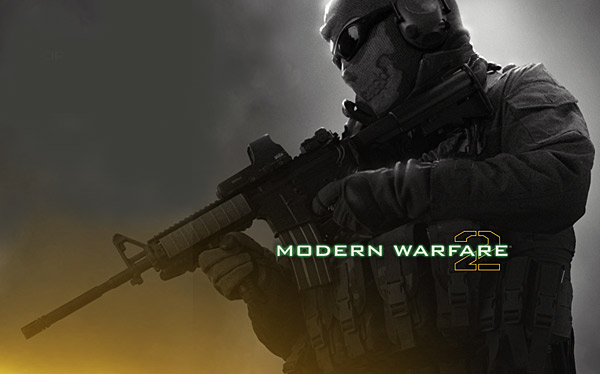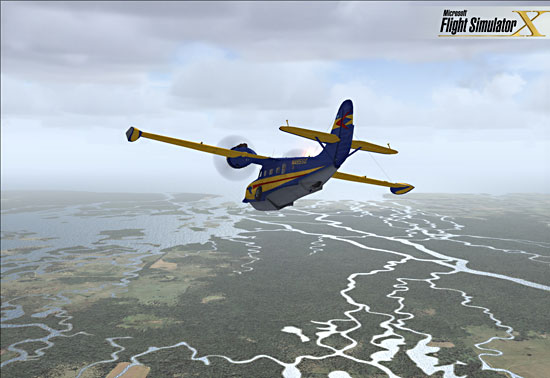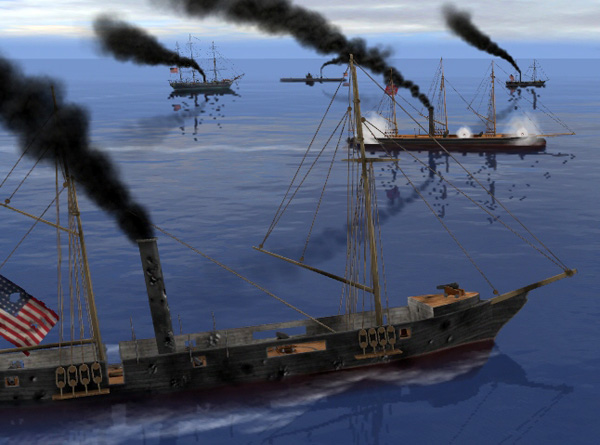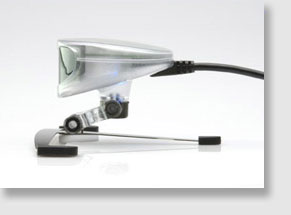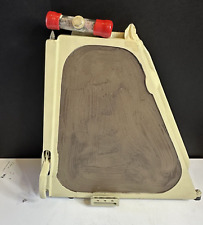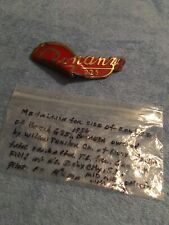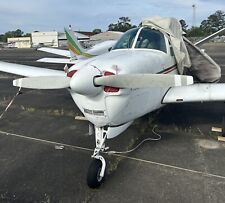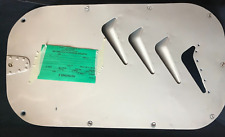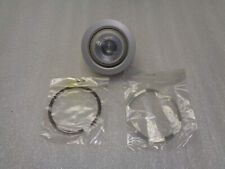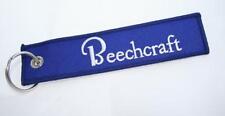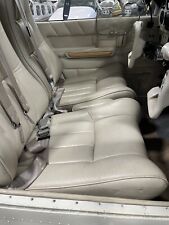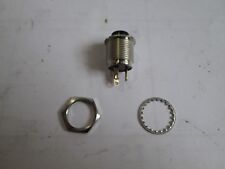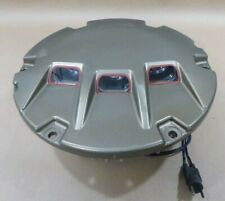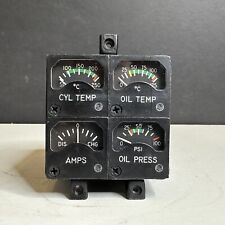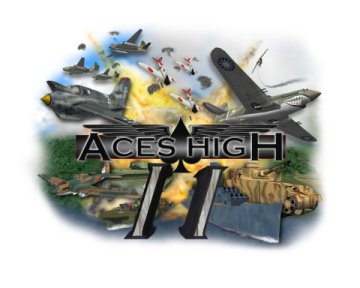
Despite HiTech Creations announced the sequel to their popular online combat simulation Aces High at the end of January. According to the press information released, Aces High II: Tour of Duty will bring to life a new online world that combines combat simulation and military role-playing in a historical World War II setting. In this structured environment, players create a persistent character who will follow a career path with either the Axis or Allies through the course of the war. These characters will be expressed through custom avatars and will receive promotions and medals, or demotions and even court-martials based upon their performance at completing assigned missions. Tour of Duty will reward both cooperative and competitive play.
SimHQ: This is a big leap for you, moving from essentially a furball-type of game with some structured events to a product that is one-half a historical immersion. How long ago did you envision this concept?
Doug Balmos: This has been part of our long-range plan since the outset although we didn’t know at the time exactly what it would be. It’s been an ongoing discussion about how to get more flight-sim enthusiasts to make the jump to online gaming.
Are you planning on running the original Aces High game at the same time as AHII ” Tour of Duty”? What percentage of your current customer base do you expect to participate in the Tour of Duty?
Aces High II will displace the current version of Aces High. The current arena format will still be available in AH2 as Aces High Classic.
We don’t know how much cross-over there will be from our current audience. It may work out that most people enjoying spending time in Classic and ToD or we may attract a predominately new audience for ToD.
How do your existing scenarios, historical theaters, and the like fit into your plans? Will there even be a need for them?
Scenarios will continue on as part of Aces High Classic. Scenarios are different than ToD because they involve a higher level of strategic planning. Although there may be a little bit of overlap, we really think that they are two separate entities doing different things.
Gameplay
How will ‘Tour of Duty’ deal with the changes in planesets and countries? For instance, if someone signs up to fly as an Axis pilot, does that mean they just hop into whatever Axis power the current theater features, or will there be several conflicts going on at once? At the same time, will someone be able to switch from one side to the other or will they be ‘locked in’ until the next tour?
A “War” will run through a number of linked campaigns. Each campaign will last for a certain amount of time, say two weeks, before advancing to the next campaign. Each campaign advances the timetable of the war with the appropriate equipment and territorial changes. After the War is finished, a new one is begun in a different theater. Each War is theater specific so if a War starts in the Pacific, all campaigns for that War will remain in the PTO.
Initially, we will only be running one War at a time. As more players participate in ToD, we will expand to multiple Wars running simultaneously in different theaters.
As the game stands now, you have gone to some lengths to maintain fairness with increased perk points for flying missions and planes that are less glamorous, increased perk points for shooting down superior planes, rigging points based upon numbers per side, etc. These aren’t things that existed in real life. In AHII, how do you ensure — if at all — that you don’t end up with a small core of very good pilots who get all the plum planes, benefits, and the like? Likewise, what plans to you have for maintaining some equality in the arenas so that we don’t have a 200 vs 50 type of battle that sometimes happens?
It’s not our goal to make every battle even. Some won’t be even by design and others won’t be even by circumstance. There’s going to be inherent inequalities due to numbers, equipment, and differences in mission profiles. Obviously, it wouldn’t work too well to just score missions and dole out rewards based on a simple criteria such as which side shot down more planes. To get around that issue, there will be handicapping in the scoring of missions to reflect how well a side carried out its mission under the circumstances. A Pyrrhic victory is no victory.
How do you ensure that players follow the rules? For example, what would to stop a player from signing up for a mission, flying along, doing his own thing, doing it well, and then getting credit for a mission success that he may not have had anything to do with?
We plan to use a type of officer evaluation report where commanders would rate the performance of their flight leaders who in turn would rate the performance of the pilots in their flight.
In the past you have added some things like AI (albeit under a pilot control) bombers. You have also stated that there will be increased AI presence in the game. How are you actually integrating human players with, say, AI bombers in a formation? Does the AI take the lead and dictate formations, etc.?
We plan to make extensive use of AI bomber formations in ToD. The AI formations are the central component that keeps missions organized, on schedule, and on target. Players flying in the bomber role will form up and fly as part of the formation. The biggest difference will be that you get to fly as part of a really large bomber group which adds its own immersion value and makes it a lot more viable in terms of survivability.
How do you ensure unit cohesion without having players taking orders from another player? Or is that exactly what you have in mind?
Players will have to take both host and player generated instruction. There is no freelancing in ToD. If a player wants to take part in organized missions but also wants to be free to do whatever they feel, well that’s a paradox we can’t provide for.
Some players are concerned about having to take instructions from other players, but it’s not a major concern for us. It’s just about getting organized so that everybody understands their responsibilities in a mission and you don’t end up with everybody trying to do the same task while other vital components of the mission are ignored. Even so, as Murphy’s Laws of Combat states, “No plan survives enemy contact intact.”
In the real military there are poor leaders and there’s not much you can do about it as a subordinate (fragging aside). But that’s not really the case in ToD and it will become a self-regulating process. Nobody is going to want to follow poor leaders and nobody is going to want to lead poor followers.
Briefly describe the rank progression as you envision it. Will this be simply a ‘perk point’ based rank increase or will certain people be chosen to run certain aspects of the arena, akin to the CM setup that we have for the TOD and Snapshot events?
Rank progession will be similar a typical RPG with experience points and levels except that we will have ranks and career points or whatever we decide to call them. It’s totally different from our perk point system in that it is mainly achieved through mission success rather than just how many kills you get.
ToD runs as an automated process so there’s nothing like a CM required. We’re considering allowing players to design campaigns and missions. The big drawback to that is that they wouldn’t be able to participate in them.
How are mission orders generated? At what level, or rank, will gamers be able to create missions or will this be limited to a few selected individuals? How will the staff be used to control the numbers of missions and who makes them?
Players don’t create missions. The missions come down from HQ a.k.a. the host. In planning an attack, the best mission plan would be one with no enemy contact. However, that would make for a pretty dull mission and we don’t want that. So the missions are orchestrated to give an almost certain probability of enemy contact while preserving the ability to be surprised and have to react.
Players and Units
How do you see squad or unit structure shaping out in AHII? For example, currently there is a 32 person limit for squad members in one arena. Is there a plan on changing that?
There will be a lot of things that are either different or won’t carry over from Classic to ToD. For example, killshooter (reflective damage for friendly fire) will remain in Classic but won’t be in ToD. Instead, there will be a court martial system.
Will squads have to fly on the same side during the conflict, or can one squaddie fly for the Germans while his buddy flies for the Americans?
The Squad format of the main arena won’t be a part of ToD.
If there are concurrent wars, can a player jump between them in the middle of a tour? For example, can a player fly for the Japanese in one tour and the Americans in another?
Players will maintain separate avatars for Axis and Allies. You can’t take your Allied character to fly for the Axis, but you can use your Axis character to fly for the Axis. You will not be able to freely switch between which side you fly for. Once you start a campaign with a side, you are stuck with that side for the duration of the campaign.
Your FAQ for AHII teases us to think of the classic movie ’12 O’Clock High’ and what it would be like to be in that setting. So much of the appeal of that movie (and the topic) is the day-in, day-out relationship between the aircrew as they went to war, fought, and died. What steps; either graphically, avatar-related, player communications, or otherwise – are you taking to recreate that as a pilot logs onto the server for his session? Besides the missions themselves, what will add to the immersiveness of the game?
The main goal is to make it a military simulation, not just a simulation of military equipment. We want to put people in the situation of being a WWII pilot rather than just the operator of a WWII plane. We’re not trying to do 24hrs in the life of a WWII fighter pilot, but we do want the immersion to extend beyond the actual combat. A lot of what we do will be determined as we start playing through some things because we need to strike a balance between immersion and pacing. Mission briefings and debriefings are a big part of the immersion and we want our briefing rooms to be very useful and user-friendly but also to convey the look and feel of the period and situation. It’s also going to be important to have a place where players can socialize and chat about the missions.
Part of the artificial feel of the furball-type of games now is that death essentially means nothing. What happens in AHII when an avatar dies? Do you go back to square one or is there a ‘penalty’ for dying? At the same time, what will you do to prevent ‘point hogging’ by some folks that will not accept risks if it involves the potential loss of their avatar?
There is a penalty for death, but it won’t take you all the way back to square one and it will be variable according to the situation and your rank. How much we penalize death vs. how much we penalize not accomplishing the mission is the delicate balance we need to strike. The benchmark we use to find that balance is by looking at mission results and loss rates. We want to keep the loss rates reasonably realistic. It won’t work if everybody is afraid to fight just as it won’t work if everybody is suicidal. The game needs to promote a balance of aggressiveness and self-preservation.
Improvements to the Actual Game
It may be too early, but what are the planned new aircraft or ground vehicle’s in the release of AH II? I know there is a lot of questions concerning the direction of the game itself. What level of importance will the actual ground conflict have in the success or failure of one side over the other?
We have a lot of renovation of existing planes to do for AH2. There are some new planes that we would really like to have right away for ToD and we’re still weighing that out. Regardless, the good news is that with our new graphics engine, the building process for the 3D models has been greatly simplified. We’re expecting a 30-50% decrease in the time it takes us to complete a new model.
We see vehicles taking a greater role in the future. Our new terrain system makes vehicles so much more viable. We’re going to improve the vehicle modeling, but the key change, and the one that really makes improved modeling worthwhile is the new terrain engine.
Some folks have wondered about the increasing use of naval assets in the game. Will submarines be used in AHII, and if they are, how will they be utilized so they can be effective without having to resort to long boring sea voyages?
Dale is a big fan of submarines as his dad was a WWII submariner. Subs still have not hit our short term plans but I expect it to at some point.
With the new graphics can we expect anything like smashed instrument panels, oil on the windscreens, or torn flight surfaces? Will the damage rendered actually be actually placed at the spot where the damage occurred?
Enhanced visual damage detailing is on our production list, but we have not yet completed a prototype model. We won’t be able to know how far we want to take it until we do that to get a concrete estimate of the resource requirements.
Graphically, what will be a ‘baseline’ type of system that will run AHII well? I know that you don’t have the minimum specs in mind yet, but how much of a hardware commitment should players expect to make to play AHII:TOD?
The platform that we’re using for our benchmark system is around a P3-900 with a Geforce 2. The give and take in how much we do will be based on keeping smooth performance on that machine. The new graphics engine is much more video card dependent as well, so even folks with slower machines might get the most bang for the buck with a simple video card upgrade.
Describe the new damage modeling as you envision it. Will the damage model reflect actual bullet strikes on individual components or will it be a percentage degradation method of damage to components? What changes in bullet modeling are you planning as well?
We’re making some big changes in gunnery and damage modeling. We’re improving the precision of our hit detection by removing the granularity from it. If our current system is 95% of as good as it gets, we’re going after the last 5%. I don’t know if it will make a noticeable difference, but at least we’ll be wholly satisfied with that aspect of it.
We’re also making improvements to our weapon calculations as well as increasing damage effects. We’re still debating the exact level we want to take those effects to so that detail is still undecided for now. Our main goal is to have the damage both believable and variable without resorting to randomness.
It sounds like terrain will have an increased significance in AHII:TOD. How dense will the terrain be in TOD and will ground units be able to use terrain more effectively than in the original game? How will icon use change in ground operations?
The new terrain system is a very nice change. Our terrains requirements are very challenging because we don’t want huge files that make downloading impractical and take forever to load. On the other hand, we also want our terrain to look and function as close to real terrain as possible.
Dale came up with a great new terrain design that satisfies these two opposite requirements. Not only will the new engine be filled with trees, forests, hedgelines, farmhouses, etc, but the real cool difference is what we call MTF or Micro-Terrain Features. MTF allows us to put in tiny terrain features that make the terrain look and feel very real. It really makes the terrain come alive when you’re flying but for vehicles the difference is astounding. You now have places to hide or take up defensive hull-down positions. MTF is an exciting development because it gives us unlimited vertex resolution at a very small cost in download size.
Flight models I am sure will also receive some changes for the new game. What plans do you envision concerning flight model fidelity and accuracy? Will individual controls and complex engine management be increased in the new version?
We’re looking to squeeze more subtleties out of the flight engine by increasing the amount of calculations and placements of the various forces that are acting on the plane. We also want to take this opportunity to revise or even completely redo some of the existing plane characteristics that we’re not satisfied with. From an internal standpoint, we also want to make modifications to the engine to facilitate the speed and accuracy of producing new aircraft.
Last question….In the current version of Aces High players can add only one player as a gunner on their aircraft/vehicle. Are there plans to change this to allow for multiple crewed aircraft/tanks/boats/dirigibles?
We will have to make some changes in that area but we haven’t decided if we’re going to change that. The current system was designed to be optimized to the vast majority of bomber sorties where you’re not able to get a plane full of guys to gun for you.
For more information, be sure to check out the HiTech Creations web site at:


